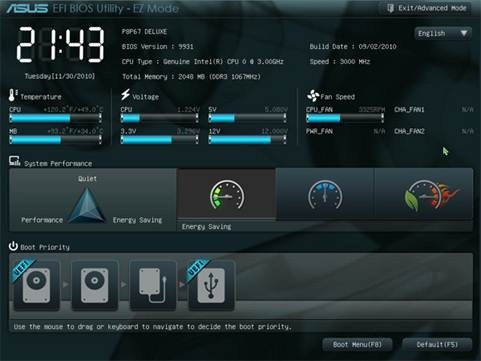Speedy and Advanced environment is always a replacement to old sluggish features.Now it might happen atleast in the scenario of Traditional BIOS in PC’s.At Computex 2011 recently,Microsoft took the stage to give a demo of Windows 8. One main intiative mentioned was, the requirement of UEFI to run Windows 8 on ARM based tablets.UEFI is the acronym for Unified Extensible Firmware interface. It is basically a replacement for BIOS which is used to set up the hardware and load and start an operating system in today’s PCs.Clearly It.s not a primarily introduction of UEFI by Microsoft, since this technology is already in the market.
As allmight be familiar with our The BIOS, which is a computer’s Basic Input-Output System. It’s a low-level software that’s so important integrally that resides on a chip that’s built into the motherboard. When your computer starts up, it’s the BIOS’s job to wake up the various components and make sure they’re functioning, then it passes off functionality to your operating system or another boot loader.Now it might ne next an era of UEFI.Although not everything is optimal/accurate yet, but UEFI operates already at BIOS level, so manufacturers have been starting to use it more on their motherboards.

Initially UEFI was developed by Intel for their Itanium based servers. The main limitation of BIOS was that it was a 16-bit with just 1 MB of addressable space and utilized Master Boot Record (MBR) partition scheme. Thus there were constraints on the amount of RAM that could be used by BIOS and it couldn’t support an HDD with a capacity of above 2.2TB. In order to overcome these limitations, Intel introduced the Intel Boot Initiative which was later renamed as EFI. It was then taken over by the Unified EFI Forum, which evolved it into UEFI.The original EFI interface is used in Macs and only supports Intel processors. But UEFI on the other hand supports both Intel and AMD processors.
http://www.youtube.com/watch?v=YLwHKHqBitc&feature=player_embedded
Advantages of UEFI
UEFI supports both 32-bit and 64-bit architecture. Thus it can utilize more RAM to do more complex processes than BIOS. UEFI also support CPU independent architecture and drivers.Unlike BIOS, UEFI can have a more visually pleasing interface that supports mouse.Apart from the standard MBR partition scheme, UEFI also supports GUID Partition Table or GPT. GPT allows for a maximum disk and partition size of 9.4 ZB (compared to 2.2TB of MBR) and 128 partitions on Windows (compared to 4 of MBR).UEFI comes with a boot manager which removes the needs for a separate boot loader. UEFI also supports extensions such as ACPI that are not 16-bit. Besides, UEFI also gives you faster start-ups and better networking support.
With the advancement in the hardware industry, BIOS is becoming more and more insufficient to handle the power and capacities of today’s machines and UEFI has the capability to handle our ever-growing thirst for more computing power at least for the next two decades.Hopefully more & more manufacturers will switch to UEFI from BIOS & add advancement on this technology.
CHAT BOX
Categories:
Alternative


